Parasites can be a problem in any koi pond, and any koi fish keepers should be sure to keep an eye out for parasite issues. Parasites can be a scary thing for you and your koi population, but if you are dealing with parasites, stay calm! The good news is that parasites are a pretty calm occurrence, and with the right care and treatments, you can keep your koi carp swimming free as healthy fish.
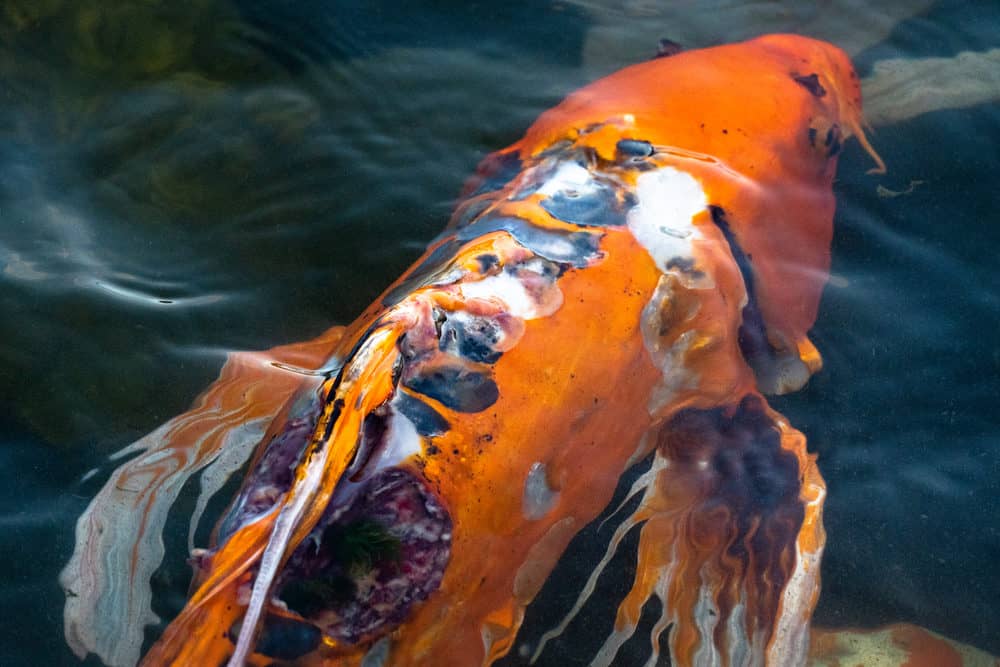
When you see a koi flicking around the pond, or it looks like they have discolorations or a gray mucus layer, that’s a warning sign. If you know your koi, you will know what’s a red flag.
Today, I’ll walk you through the equipment you’ll need to identify potential parasites, as well as some common parasites you might see and how to deal with them.
The list of equipment you’ll need is pretty common for any koi owner. If you don’t have this equipment, many pet stores will have some combination, and specialty koi dealers definitely will.
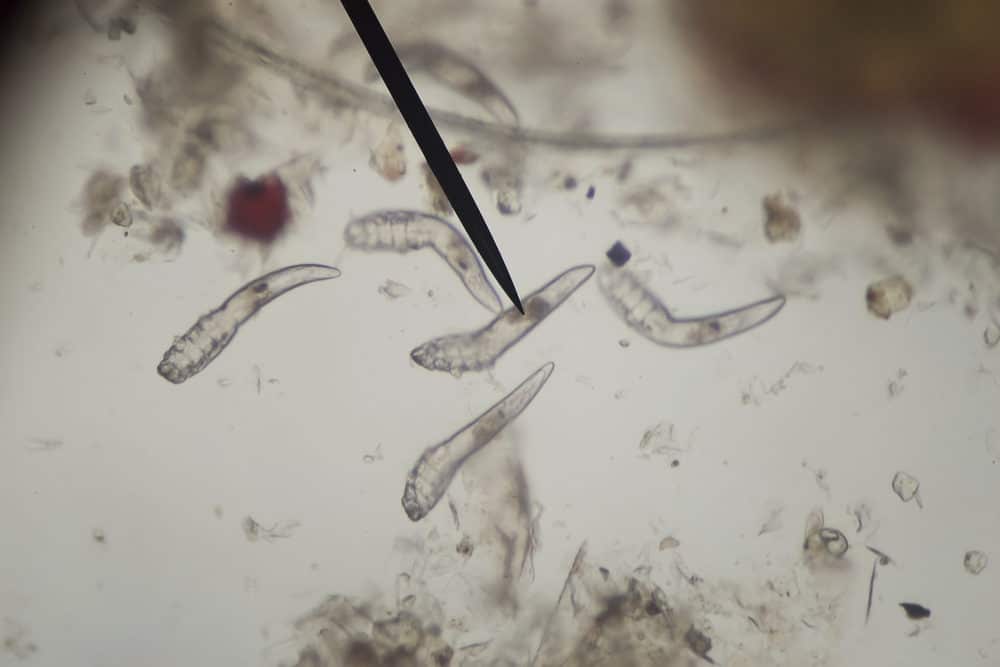
You might notice some mucus on your koi, but most parasites aren’t going to be visible to the naked eye. That’s why you need a microscope. Microscopes are essential for any koi keeper, so if you don’t have one, I recommend that you do as soon as possible.
To confirm a parasite infestation, you’ll need to take a skin scrape from your koi. Take a clean microscope slide to carefully scrape a small amount of mucus from one koi. Put on a cover slip and take a look through your microscope. Repeat this for between two and four koi. If this isn’t something that you’ve done before, I recommend you visit your local koi dealer and ask them to demonstrate so you know the technique and can avoid harming any koi. Barring that, there are a number of freely available video walkthroughs.
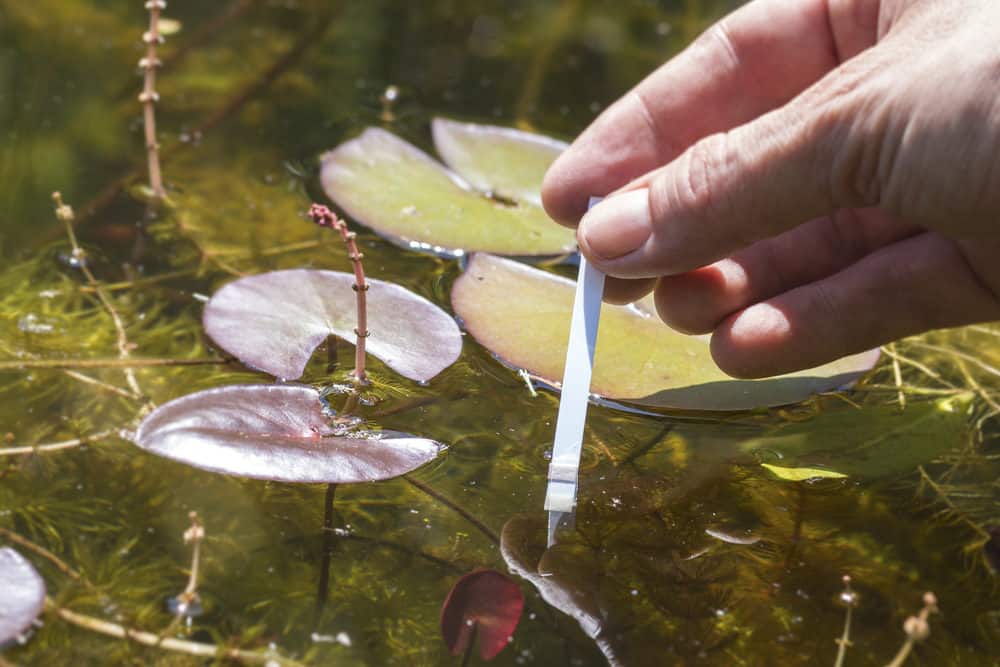
If you’re seeing parasites from the samples, you can assume your pond has poor water quality and the entire population is full of infected fish. Make sure that you know the exact volume and temperature of your water pre-treatment because any treatments will affect your levels and need to be balanced.
There are many different kinds of parasites that can infect your koi population, so next we’ll show you some of those along with some treatment tips.
Also known as ichthyophthirius multifiliis, this parasite leaves effects that you can see even without a microscope. If your koi are covered in white spots roughly the size of salt grains, this is the likely culprit. Always use a skin scrape to be sure, though.
This parasite reproduces quickly, so detecting and treating this early is very key.
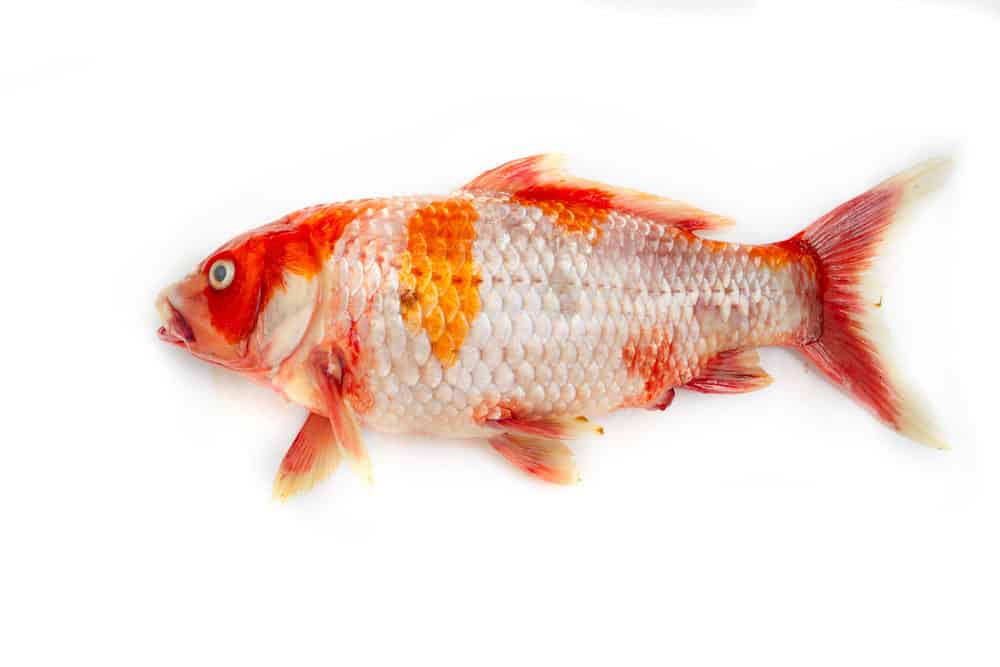
The most common treatment is mixing formaldehyde and malachite green. You can get these as a pre-mix from your local koi dealer, but if you have access to the ingredients separately, you can make your own mixture specific to your pond water temperature. After five days, apply a second treatment and take further skin scrapes to ensure that the treatment’s working.
Costia can harm both the skin and gills of koi. If left untreated, it can be fatal, so be sure you’re keeping an eye on things. Symptoms of Costia can be unhealthy amounts of mucus, lethargic koi, sunken eyes, and respiratory distress. If you see any of these symptoms, test for Costia right away.
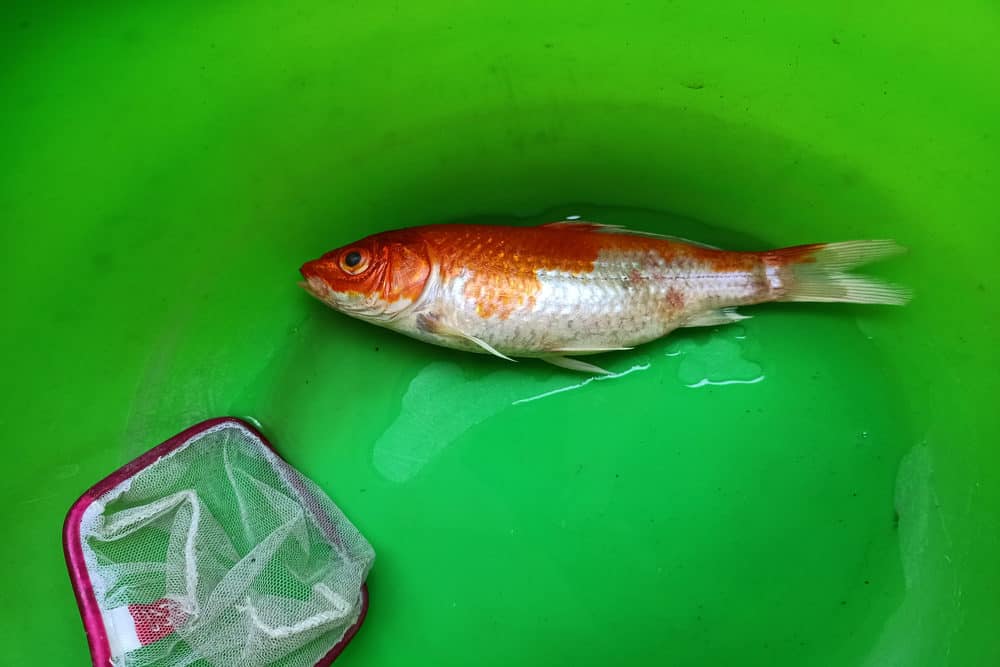
You’ll definitely need a skin scrape to identify this one. If your microscope can magnify up to 400 times, that’s what I recommend. When checking for Costia, add a drop of water to your slide as well. If you see anything on the slide that looks like a very fast-moving comma, especially along the water and mucus line, it’s probably Costia.
Costia can be treated with a mixture of formaldehyde and malachite green (often available as a pre-mix). I’ve also had success using potassium permanganate.
This one is also called Lernaea. Anchor worm is visible to the naked eye and can be 10 to 12 millimeters long. You can usually only see the body and tail of the anchor worm because the head is under a scale. Anchor worms might attach themselves to the dorsal or tail fin, and you might see them on the bellies of your koi when you first find them.
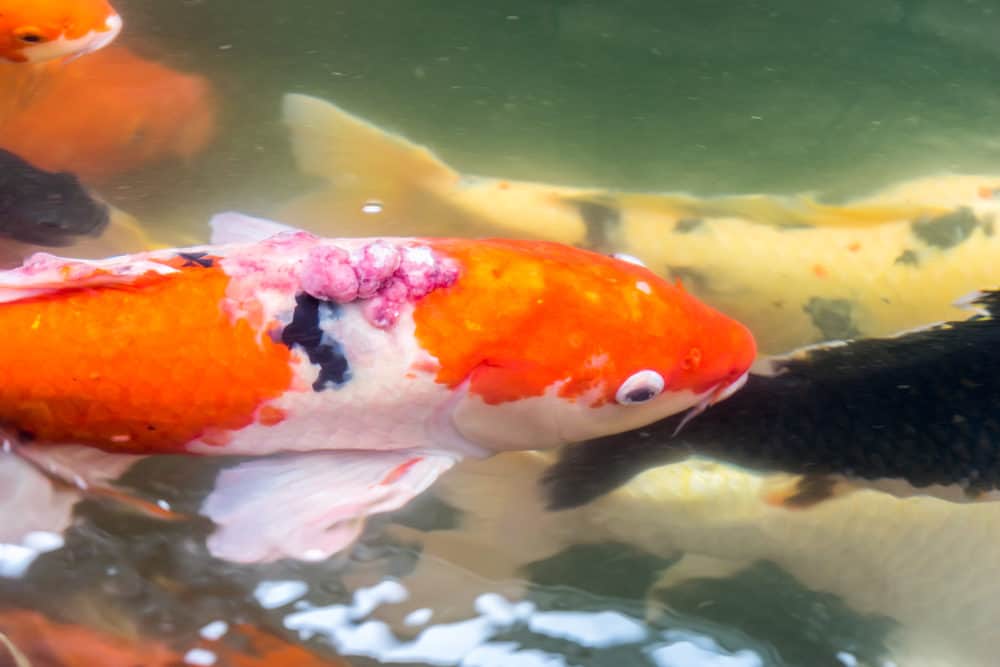
Anchor worms need to be removed manually. For this, you’ll need tweezers, an anesthetic, a cotton ball, and some potassium permanganate. Dip the cotton ball in the potassium permanganate solution and dab the worm gently with it. That should cause it to release its’ grip, and then you can use the tweezers to very gently remove it from the affected fish.
A chemical like Lice Solve can help treat your pond, but chemical treatments don’t kill anchor worm eggs, so be prepared to have to do a lot of manual removals if you find them.
Gill flukes are another kind of common parasite that can both lay eggs and attach to your koi. Koi infected with gill parasites will often appear to jump around and rub themselves on objects to try to get rid of the fluke. The effect on your koi is similar to a flea on your dog or cat.
Gill flukes, or dactylogyrus, need a skin scrape and a microscope to be seen. You’ll recognize them as nearly transparent and worm-shaped, with a head and hooks clearly visible.
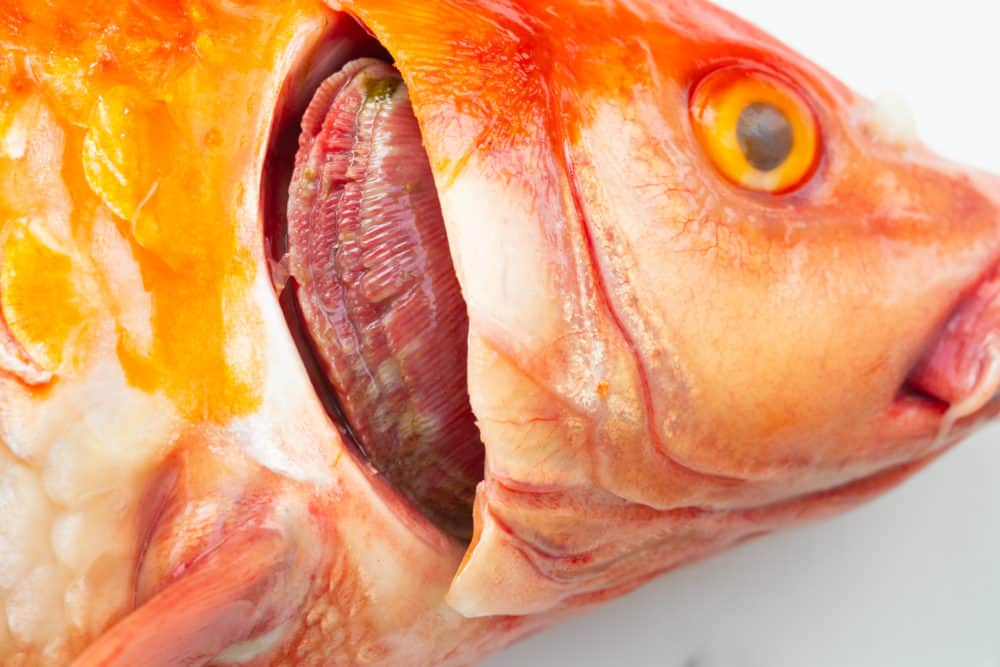
If your skin scrape slide only shows a couple of gill flukes, don’t worry too much about them. Most healthy koi produce mucus that slows gill flukes way down. However, if you see a lot on your slide, Fluke Solve is your best bet for treatment. I’ve also used a potassium permanganate solution.
Closely related to the gill fluke, the skin fluke (gyrodactylus) causes respiratory problems, and its anchors can cause a secondary infection, so quick treatment is suggested.
Skin flukes will have a very similar shape to gill flukes. They can be treated by Fluke Solve or potassium permanganate. With skin flukes, take a second skin scrape after a few days. You may need multiple pond treatments to totally get rid of the infestation.
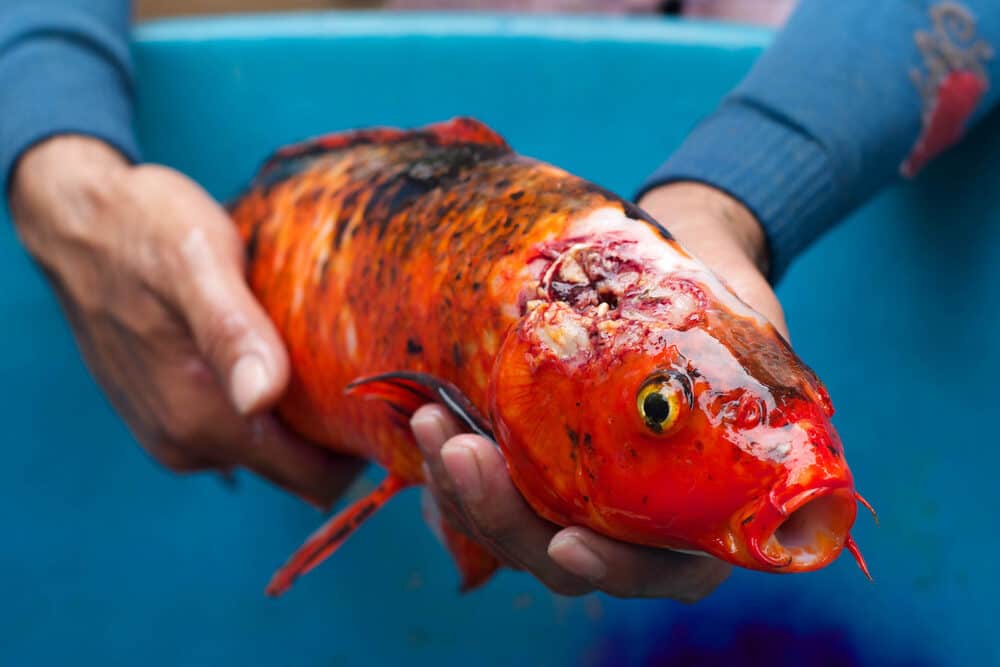
Chilodonella is a protozoan parasite, and so it can spread very quickly throughout your pond and koi population. Chilodonella is considered one of the most dangerous because it can be fatal. This is especially true if your pond is overpopulated.
Signs of Chilodonella are opaqueness/swelling of a koi’s skin, koi swimming with their fins much closer to the body than normal, and listlessness. Chilodonella actively attacks the gills and can destroy them, so you have to treat it quickly.
Like many other parasites, you can only see Chilodonella under a microscope with a minimum magnification of 100x. You can recognize it by its distinctive oval shape and thick exterior.
You can treat your sick fish with strong salt baths (at least a 3% solution) and your pond with a mixture of salt, Malachite Green and Formalin, or potassium permanganate.
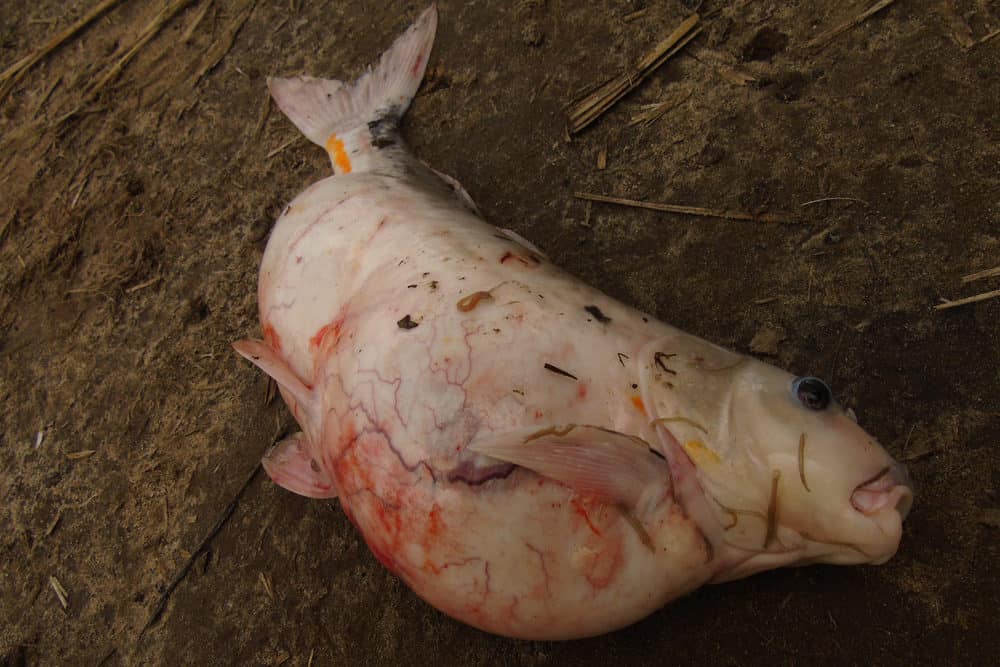
Similar to Chilodonella, Trichodena is a parasite that attacks the skin and gill tissues of koi. Without treatment, gills can suffer severe and permanent damage.
Trichodena is easy to detect with the help of a microscope. It’s almost perfectly round and surrounded by hundreds of hooks. It will likely be rotating when you view it as well.
Infected koi will take on an opaque, gray-white look and also show symptoms of rubbing and listlessness.
As with many parasites, I recommend taking care of Trichodina with potassium permanganate, but you can also use acriflavine with salt.
The fish louse, also called argulus, is technically a crustacean but is very much a parasite to any koi pond. It will often be brought in by toads and frogs who are stopping by your koi pond before moving on.
Fish lice are relatively large, so you should have no problem seeing them. They attach to a koi using suckers then puncture the koi’s tissue and feed on blood and body fluids. Their puncture also releases a poison that can cause abnormal behavior. On top of all this, the punctures are prone to a secondary infection.
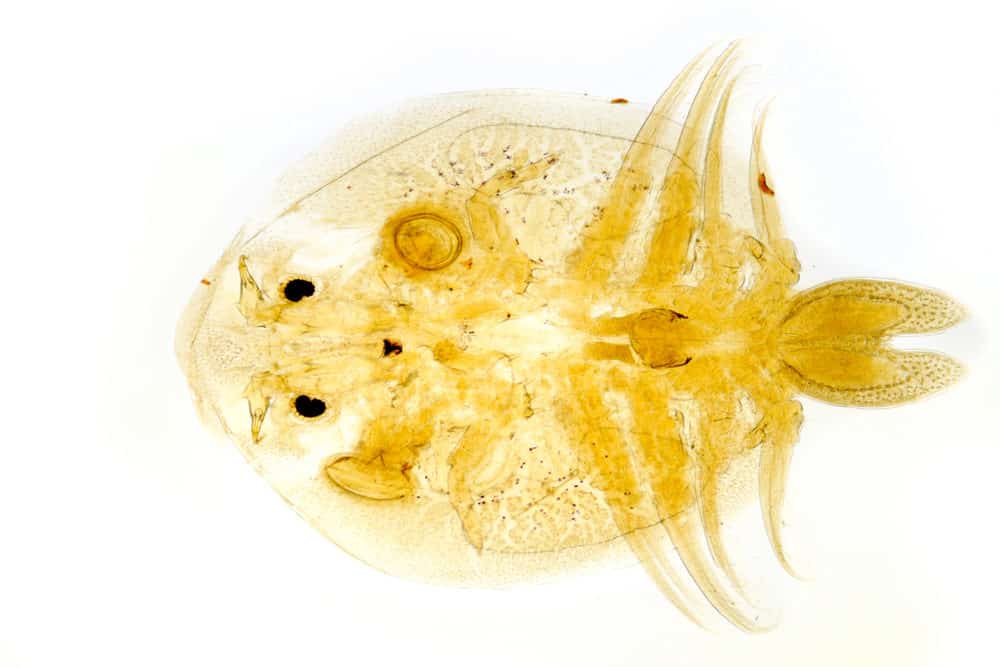
Fish lice reproduce by laying eggs, and a single fertilization can produce up to 500 eggs. So, if you see even a single fish louse, prioritize getting rid of them immediately.
To treat a fish louse outbreak, you’ll need to treat your koi and pond separately. Unfortunately, every koi has to be removed from the pond, sedated, and inspected for fish louse. Any that you see have to be carefully removed with tweezers. The best way to treat the pond is with Lice Solve. Follow their instructions for amount and frequency but don’t release your koi back into the pond too early or you’ll find yourself having to start again.
Leeches, fortunately, aren’t very common in koi ponds, but they do appear from time to time. They mainly get in there by attaching to plants, fish, or other natural things you bring into the pond. Many pond leeches will feed more on sludge and plant material than fish. However, there is a specific fish leech (sometimes you’ll see it called piscicola geometra) that can be dangerous.
Fish leeches are about an inch (2.5 centimeters) long and will attach anywhere on your koi and feed. On their own, fish leeches aren’t fatal, although your koi will find them very unpleasant. The bigger issue is that the wounds they cause leave your koi open to additional viral and bacterial infections.
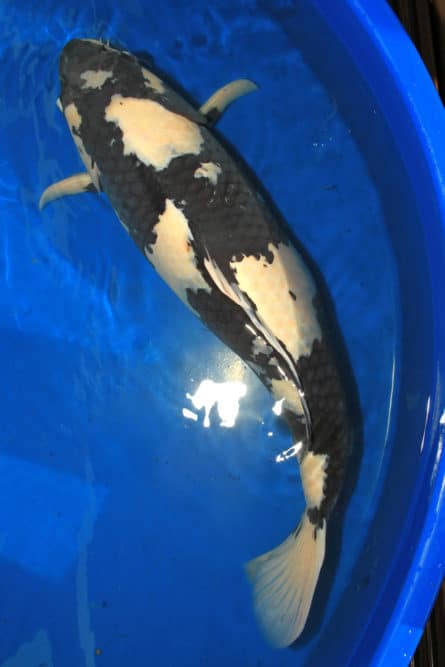
In general, the best way to avoid these fish leeches is through preventative measures. Quarantine any new potential pond additions for 2-4 weeks before introducing them to the pond. Leeches only have a 30-day life cycle.
If you do find any fish leeches, though, you’ll have to remove them manually with tweezers. You may want to invest in a standard leech trap. These can sit at the bottom of your pond and act as an extra layer of security. Plus, you can hide them with plants so everything still looks nice!
As long as you are able to determine what of type of fish parasite you're dealing with, it is relatively easy to treat the infected koi. Preventative measures also go a long way to maintaining a healthy koi pond!



